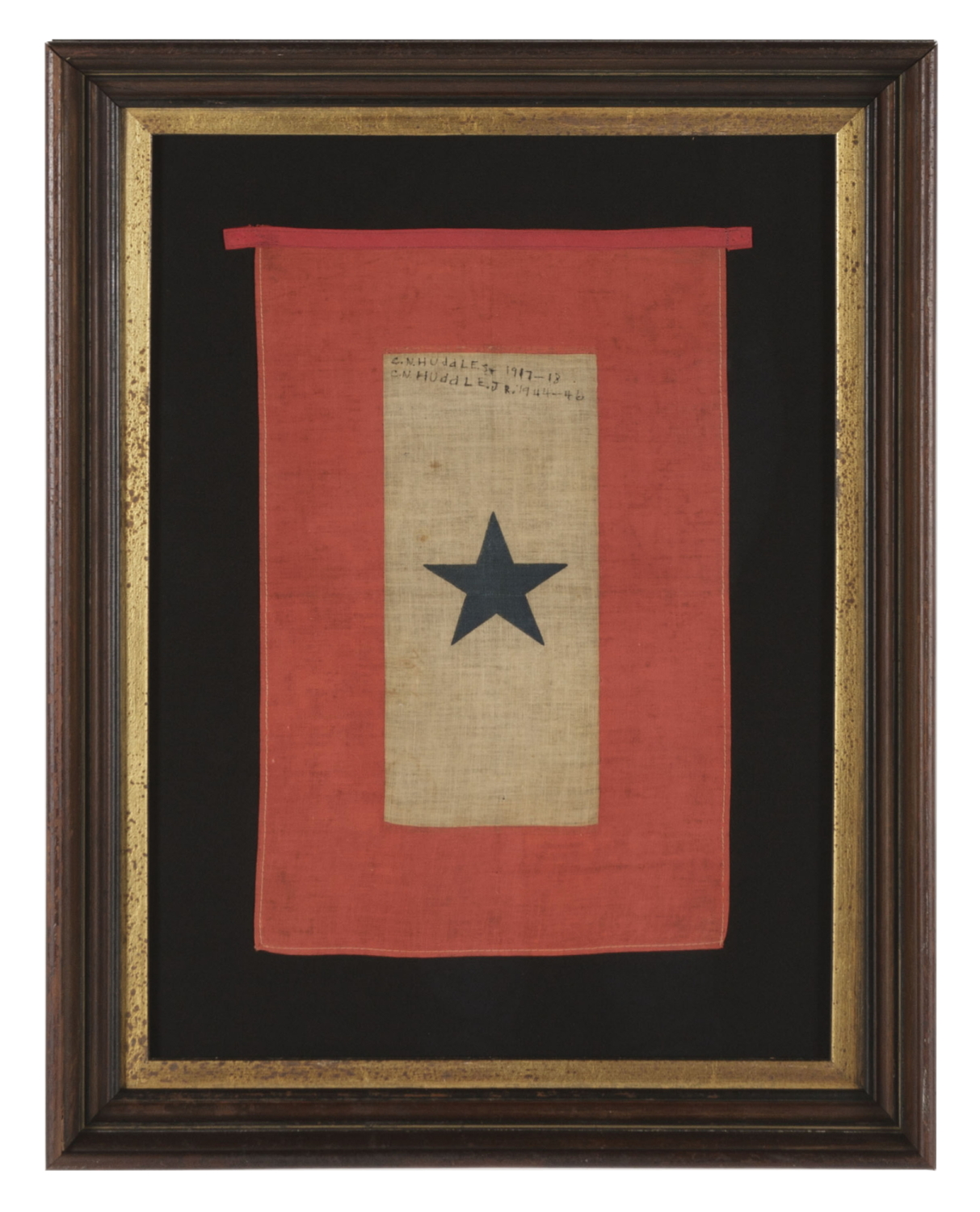
| |
SON-IN-SERVICE WINDOW BANNER, HUNG DURING BOTH WWI AND WWII, FOR FATHER AND SON, WITH THE NAMES OF BOTH MEN INSCRIBED IN THE WHITE FIELD |
|
| Available: |
Sold |
| Frame Size (H x L): |
25" x 19.25" |
| Flag Size (H x L): |
16.5" x 11.5" |
|
| Description....: |
|
The practice of displaying a son-in-service banner became popular during WWI (U.S. involvement 1917-18) and was continued or even increased during WWII (U.S. involvement 1941-45). Families would display them in their front windows to signify the numbers of sons they had serving in the military during the war. There was one star for each child. The flags were traditionally composed of a rectangular white field with a blue star or stars, framed by a rectangular red border. Typically, if a soldier was killed, a gold star was applied over the blue. If other circumstances occurred, such as the soldier became a prisoner of war or missing in action, another color was used, such as purple or white. There was a whole list of colors to signify different statuses.
The names of two men are inscribed in the white field, accompanied by dates served. These read as follows:
"C.N. Huddle, Sr. 1917-18" and "C.N. Huddle, Jr. 1945-46"
While no research has yet been done on these two individuals, logic suggests that they were father and son and that this banner was hung during both wars. Because the names of the individual(s) who served are seldom known when a service banner comes to the marketplace, the identification is of notable interest and the fact that it was evidently used for both men is of even greater significance. In spite of having owned and seen many, WWI examples are much more scarce, and this is a circumstance I have not before encountered.
Construction: Printed on cotton with a red, machine-sewn binding along the top.
Mounting: The solid walnut molding has ebonized decoration and dates to the period between 1860 and 1880. The hand-gilded and distressed Italian liner is modern. The banner has been hand-stitched to 100% cotton, black in color, which was washed to reduce excess dye. An acid-free agent was added to the wash to further set the dye and the fabric was heat-treated for the same purpose. Spacers keep the textile away from the glazing, which is U.V. protective glass.
Condition: There is minor fading and there is minor foxing minor soiling. Many of my clients prefer early flags to show their age and history of use. |
|
|
|
| Collector Level: |
Beginners and Holiday Gift Giving |
|
| Flag Type: |
Parade flag |
|
| Star Count: |
Other |
|
| Earliest Date of Origin: |
1917 |
|
| Latest Date of Origin: |
1918 |
|
| State/Affiliation: |
|
|
| War Association: |
WW 1 |
|
| Price: |
SOLD |
|
| |
Views: 1327 |
|
|
|

